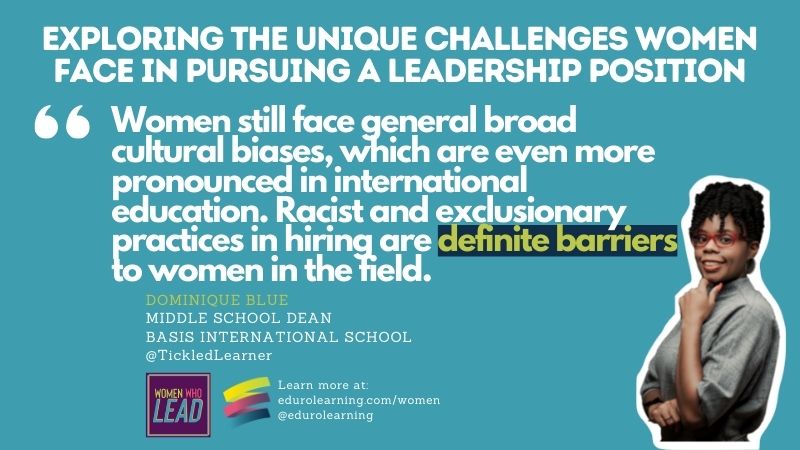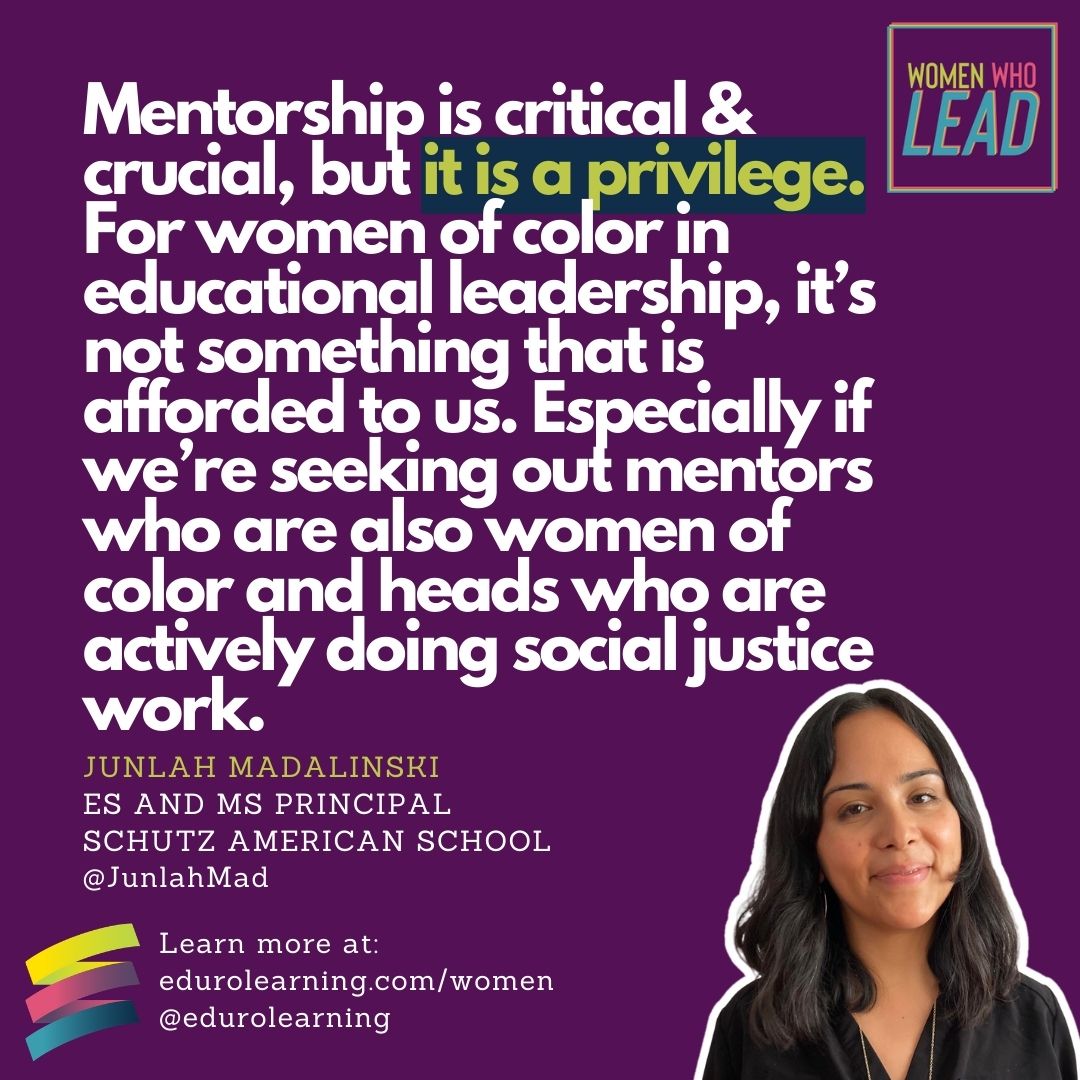
This article first appeared in The International Educator
Although we may have the perception that there are more women moving into leadership roles in recent years, the data shows that is not the case. During the Women Who Lead interviews, I spoke to Deb Welsh, CEO of the Academy of International School Heads, who noted that the percentage of women in Head of School positions has remained steady at 28-33% over the last ten years (during both her and Bambi Betts’ tenure as CEO of AISH).
While we may see more women in lower leadership positions, the results of the Diversity Collaborative 2019 Survey From Resistance to Sustainability and Leadership Cultivating Diverse Leaders in International Schools, state that “the pipeline is a trickle by the time you get to the upper end.” The reality is that this is an ongoing problem in international, public and private schools around the world.
More specifically, in international schools, according to the same survey, “Whatever their definition, international schools are more likely to be focused on students demonstrating these attributes than on faculty/leadership reflecting and modeling these attributes.” I will be sharing more data on this topic in my upcoming keynote at the ECIS Leadership Conference on 9 April 2021, and you can learn more about these realities in the Women Who Lead program.
When I spoke to over 70 successful women leaders in the field of education for the Women Who Lead program, six key themes emerged as unique challenges for women pursuing a leadership role. Many readers will find these stories familiar. For those that are hearing these types of stories for the first time, you may want to seek out opportunities to dig deeper into why that might be.
The common themes throughout these interviews focused on challenges around
- unconscious bias and daily microaggressions;
- physical, linguistic and cultural expectations of “leaders”;
- perception (or reality) of lack of opportunities for women;
- exclusive networking practices among “traditional leaders”;
- impostor syndrome and double standards; and
- availability of mentorship and guidance.
In the next several articles, I’ll be highlighting some specific stories regarding these challenges, as well as potential ideas to work towards resolving them, beginning with the challenge of unconscious bias and daily microaggressions in today’s article.
Is it time to embrace YOUR Inner Leader?
Many of us are building leadership skills without even realizing it! Are you already demonstrating leadership potential in your current role? Is it time to take the next step in your leadership journey?
Take this quiz to recognize your leadership potential and identify where you can continue to grow!
These questions highlight informal leadership skills that are highly valued in successful formal leadership positions. How many are you already building?
Are you ready? Click here to take the quiz now!

While many people might find themselves facing the problem of dealing with microaggressions in the work environment, women in leadership, and even more so, women of color, often encounter particularly elevated levels of these negative interactions, since in their positions they so visibly combine the lightning-rod issues of gender and power dynamics.
Junlah Madalinski, ES & MS Principal, Shutz American School, Alexandria, Egypt, describes this so clearly in our conversation. “What happens when women of color are in leadership positions, is it makes them more visible. Instead of having yourself within your classroom, you have more of a larger audience and microaggressions tend to play themselves out in that way.”
Women, and women of color in particular, no longer have the safety of “staying in their classroom” once they take on the mantle of leadership. Being in the more public eye of a leadership position leaves them more exposed to these daily attacks, unless there is action taken to improve the school culture.
In fact, these kinds of microaggressions can begin even in the interview process. For example, Katie Wellbook, Assistant Principal for Academics, Suzhou Singapore International School, China has heard comments like: “Your earrings are too big, they’re a distraction. Is that a power suit you’re wearing? Is it possible to be too ambitious?” As she says, “women have to determine if these comments are misogynistic. Would they ask this to a man?”
While these kinds of comments might be an initial warning sign to determine if the recruiting organization is the right fit for the individual, we need to shift the culture to be unaccepting of this kind of language and commentary in any setting.
One of the first steps organizations can put into place to begin to take action on the challenge of unconscious bias and daily microaggressions is to develop processes to systematically check bias before any action can be taken.
The reality is, we all have biases, and even though we can do training and practice self reflection and personal improvement, we can’t recognize unconscious bias because it is, by definition unconscious.
As Caroline Brokvam, Director American School of Antananarivo, Madagascar, states, “unless you put process and practices and procedures in place to make sure you can’t act on your own biases it makes no difference in organizations.”
An example of the types of procedures schools can put in pace, shared by Caroline Brokvam, is using blind CVs when hiring. When school leadership comes to recognize that hiring practices do not reflect the diversity, equity and inclusion practices they aspire to, even the small and practical step of removing photos, names and pronouns from applications can help work towards a more equitable hiring system.
In the Diversity Collaborative 2019 Survey From Resistance to Sustainability and Leadership Cultivating Diverse Leaders in International Schools, the authors note that “critical factors that influence successful international schools on issues of diversity, equity and inclusion appear to be intentionality and developing a comprehensive, long-term, strategic commitment.”
This is not a problem for women to tackle on their own, but we know that building systemic change takes time. In the next article, I’ll address some stereotypical expectations of top level leadership, and what women can do, independently, to meet that challenge head on.
Leverage Your Leadership with Women Who Lead!
Does this resonate with your personal experience? Or do you have the power and influence to make a difference in your school community? Explore more from our women who lead and learn how to make an impact at: https://edurolearning.com/women/



0 responses on "Exploring the Unique Challenges Women Face in Pursuing a Leadership Position"